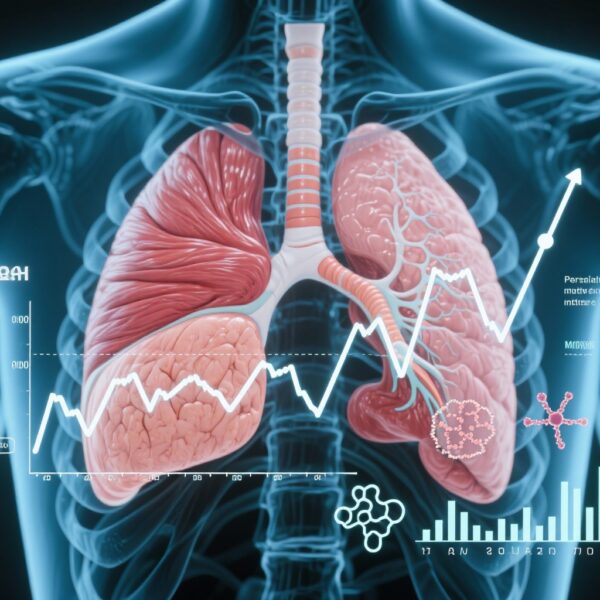Highlights
– In a propensity score–matched target‑trial emulation of 2,571 matched pairs, SGLT2 inhibitor (SGLT2i) use was associated with a lower rate of progression to advanced fibrosis compared with dipeptidyl peptidase‑4 inhibitor (DPP‑4i) use (HR 0.78; 95% CI 0.67–0.89).
– Absolute rates of confirmed fibrosis progression were 3.46 versus 4.44 events per 100 person‑years for SGLT2i versus DPP‑4i users; median follow‑up was 3.7 years.
– No difference in major adverse liver outcomes (MALO: incident cirrhosis, decompensation, hepatocellular carcinoma, liver transplant) was observed, likely reflecting low event rates and limited follow‑up for hard outcomes.
Background and disease burden
Metabolic dysfunction‑associated steatotic liver disease (MASLD) is now recognized as the dominant cause of chronic liver disease worldwide and is closely linked to type 2 diabetes mellitus (T2DM), obesity, and cardiometabolic risk. Progressive hepatic fibrosis is the principal histologic driver of liver‑related morbidity and mortality in MASLD; thus, therapies that slow or halt fibrosis progression are a major unmet need.
Sodium‑glucose cotransporter‑2 inhibitors (SGLT2is) have transformed management of T2DM because of benefits on cardiorenal outcomes and weight. Emerging data from small trials and observational cohorts suggest SGLT2is may reduce hepatic steatosis and liver enzymes, but whether these agents reduce fibrosis progression compared with other glucose‑lowering drugs has been uncertain. The study by Choi et al. (2025) addresses this gap by comparing fibrosis progression among real‑world new users of SGLT2is versus DPP‑4 inhibitors (DPP‑4is) in adults with MASLD and T2DM with low‑to‑intermediate baseline fibrosis risk.
Study design and methods
Choi and colleagues performed a retrospective, multicenter target‑trial emulation using an active‑comparator, new‑user design. The study population included adults with documented MASLD, T2DM, and baseline Fibrosis‑4 (FIB‑4) index ≤2.67 (low‑to‑intermediate fibrosis risk) who initiated either an SGLT2i or a DPP‑4i between 2013 and 2023 at Mass General Brigham (U.S.) or Asan Medical Center (South Korea).
Key design elements:
- Exposure: initiation of an SGLT2 inhibitor versus a DPP‑4 inhibitor (active comparator chosen to mitigate confounding by indication).
- Primary outcome: progression to advanced fibrosis defined as FIB‑4 >2.67 on at least two occasions within 1 year (to reduce misclassification due to transient lab changes).
- Secondary outcome: major adverse liver outcomes (MALO) — incident cirrhosis, hepatic decompensation, hepatocellular carcinoma, or liver transplantation.
- Analytic approach: propensity score matching to balance baseline covariates, followed by time‑to‑event analyses; median follow‑up 3.7 years.
Key findings
From 16,901 eligible patients the authors derived 2,571 propensity score–matched pairs with well‑balanced baseline characteristics. Over a median 3.7 years of follow‑up, the incidence of confirmed progression to advanced fibrosis was 3.46 events per 100 person‑years in the SGLT2i group versus 4.44 per 100 person‑years in the DPP‑4i group.
The adjusted hazard ratio (HR) for fibrosis progression with SGLT2i use compared with DPP‑4i was 0.78 (95% confidence interval [CI] 0.67–0.89; p < 0.001), indicating a relative risk reduction of about 22% in this matched real‑world sample. The protective association was consistent across pre‑specified subgroups, including concomitant metformin, statin, and aspirin use.
For the secondary endpoint of MALO, there was no statistically significant difference between groups. Absolute numbers of MALO were low within the follow‑up period, limiting power to detect differences in hard clinical events.
Interpretation of effect sizes and clinical significance
A HR of 0.78 is clinically meaningful in the context of a slowly progressive disease like MASLD. The observed absolute rate difference (approximately 1.0 event per 100 person‑years) translates into a number needed to treat (NNT) for one event averted over one year of roughly 100; over longer horizons the NNT would be lower. However, the primary outcome is a biomarker‑based threshold (FIB‑4), not histologic confirmation; therefore, clinical translation should be cautious.
Strengths
- Robust real‑world design using an active comparator (DPP‑4i) and new‑user framework reduces immortal time and prevalent‑user biases common in observational pharmacoepidemiology.
- Large, multicenter cohort with external validity across two healthcare systems (U.S. and South Korea).
- Use of confirmatory FIB‑4 measurements (≥2 within 1 year) to define progression reduces misclassification from transient fluctuations in aminotransferases or platelets.
- Propensity score matching achieved well‑balanced baseline covariates, and consistent subgroup findings strengthen causal inference.
Limitations and potential biases
Several limitations temper definitive causal conclusions:
- Residual confounding: despite matching, unmeasured differences (e.g., lifestyle changes, alcohol use not fully captured, duration/severity of diabetes, provider prescribing patterns) may contribute to observed associations.
- Outcome measurement: FIB‑4 is a validated noninvasive fibrosis index for population‑level risk stratification but imperfect as a surrogate for histologic fibrosis. Changes in component labs (AST, ALT, platelets, age) could influence FIB‑4 independent of true fibrosis change.
- Exposure misclassification and adherence: prescription records indicate initiation, not sustained adherence or cumulative exposure; switching between drug classes over time may dilute effects.
- Event rates for MALO were low and follow‑up may be insufficient to capture differences in hard clinical outcomes that accrue over longer periods.
- Generalizability: cohort drawn from two academic centers may not reflect community practice or populations with different comorbidity profiles. Conversely, inclusion of two geographically disparate centers adds generalizability compared with single‑center studies.
Biological plausibility and mechanistic insights
There are plausible mechanisms by which SGLT2is could attenuate fibrosis progression in MASLD:
- SGLT2is induce modest weight loss and reduce visceral adiposity, lowering hepatic free fatty acid delivery and de novo lipogenesis.
- They improve glycemic control and insulin sensitivity, which reduces lipotoxicity and downstream inflammatory signaling in the liver.
- Preclinical models and small clinical studies report reductions in hepatic steatosis (imaging or MRI‑PDFF) and liver enzyme improvements with SGLT2is, suggesting upstream effects that could translate to slower fibrogenesis.
- Putative anti‑inflammatory and antifibrotic effects — for example, reductions in circulating inflammatory mediators and modulation of hepatic stellate cell activation — have been reported in experimental work but require further human validation.
By contrast, DPP‑4 inhibitors are weight‑neutral and have less convincing evidence for reductions in hepatic fat or fibrosis, which supports the choice of DPP‑4i as a reasonable active comparator in this observational analysis.
Implications for clinical practice
For clinicians managing patients with MASLD and T2DM, this study adds supportive evidence that choosing an SGLT2i rather than a DPP‑4i may confer benefits beyond glycemic control, potentially slowing progression to advanced fibrosis. Given the established cardiorenal benefits of SGLT2is in many patients with T2DM, these data may further tip the balance toward preferential use of SGLT2is in eligible patients with MASLD when there are no contraindications.
However, treatment decisions should remain individualized. The present evidence is observational and uses FIB‑4 as a surrogate—randomized controlled trials with histologic or robust noninvasive endpoints and longer follow‑up are needed to confirm a causal effect on fibrosis progression and hard liver outcomes.
Research gaps and next steps
Key priorities going forward include:
- Prospective randomized trials testing SGLT2is versus active comparators with pre‑specified fibrosis endpoints (histology, MRI‑elastography, or validated transient elastography thresholds) and adequate follow‑up for clinical outcomes.
- Mechanistic studies in humans to define pathways linking SGLT2 inhibition to changes in hepatic inflammation and fibrogenesis.
- Subgroup analyses addressing patients with more advanced baseline fibrosis, differing metabolic phenotypes, or coexisting liver diseases, to refine indications.
- Health‑economic analyses to determine the value of selecting SGLT2is for liver‑centric benefits in addition to cardiometabolic indications.
Conclusion
Choi et al. report that initiation of SGLT2 inhibitors was associated with a statistically and clinically meaningful reduction in the risk of progression to advanced fibrosis, compared with DPP‑4 inhibitors, in adults with MASLD and T2DM with low‑to‑intermediate baseline fibrosis risk. The findings are biologically plausible and consistent with prior smaller studies reporting improvements in liver fat and enzymes with SGLT2is. However, limitations inherent to retrospective observational research and reliance on FIB‑4 as the primary outcome require cautious interpretation. Randomized trials with robust fibrosis assessments and long‑term follow‑up are needed to confirm whether SGLT2is should be prioritized for liver protection in patients with MASLD and T2DM.
Funding and trial registration
This analysis was a retrospective target‑trial emulation using electronic health record data; the primary manuscript should be consulted for specific funding disclosures and institutional approvals. There is no ClinicalTrials.gov randomized trial identifier associated with this retrospective analysis.
Selected references
1. Choi J, Fulop D, Nguyen VH, Przybyszewski E, Song J, Carroll A, Michta M, Almazan E, Simon TG, Chung RT. Comparative Risk of Fibrosis Progression with SGLT2 vs. DPP‑4 Inhibitors in MASLD and T2DM with Low‑to‑Intermediate Fibrosis. Clin Mol Hepatol. 2025 Nov 11. doi: 10.3350/cmh.2025.0825. Epub ahead of print. PMID: 41215582.
2. Younossi ZM, Koenig AB, Abdelatif D, Fazel Y, Henry L, Wymer M. Global epidemiology of nonalcoholic fatty liver disease — Meta‑analytic assessment of prevalence, incidence, and outcomes. Hepatology. 2016;64(1):73–84. doi:10.1002/hep.28431.
3. European Association for the Study of the Liver (EASL), European Association for the Study of Diabetes (EASD), European Association for the Study of Obesity (EASO). EASL‑EASD‑EASO Clinical Practice Guidelines for the management of non‑alcoholic fatty liver disease. J Hepatol. 2016;64(6):1388–1402.
4. Zinman B, Wanner C, Lachin JM, et al.; EMPA‑REG OUTCOME Investigators. Empagliflozin, cardiovascular outcomes, and mortality in type 2 diabetes. N Engl J Med. 2015;373(22):2117–2128. doi:10.1056/NEJMoa1504720.



